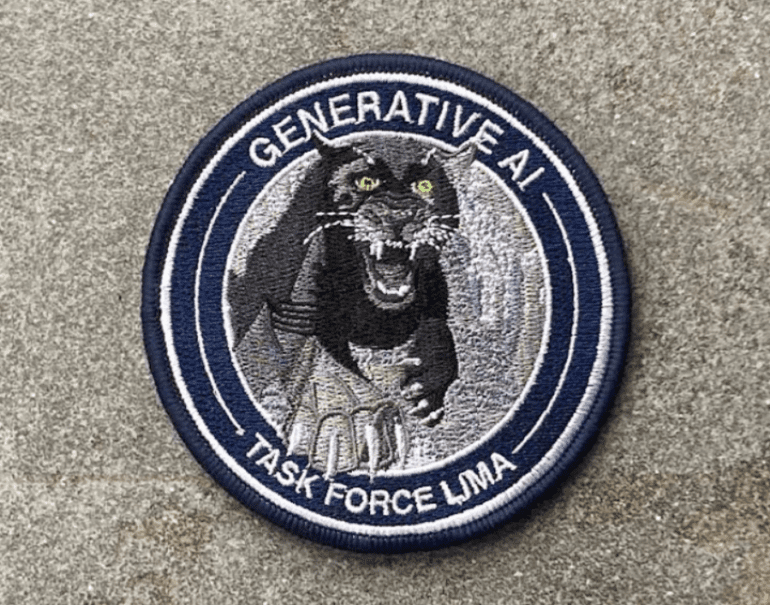- Task Force Lima, under the Pentagon, is establishing a “virtual sandbox” for responsible experimentation with generative AI tools.
- Led by Navy Capt. M. Xavier Lugo, the task force aims to evaluate, coordinate, and implement generative AI applications within the Department of Defense.
- Generative AI shows promise for text summarization, data analysis, and human-machine interaction, but risks and limitations persist.
- The sandbox environment will facilitate practical experimentation, ensuring responsible integration into military workflows.
- Collaboration with various DOD entities and funding initiatives like “Alpha-I” will drive the transition from experimentation to operational deployment.
Main AI News:
The Pentagon’s Task Force Lima unit is gearing up to unveil a fresh “virtual sandbox” center, providing military personnel with a responsible environment to explore approved generative artificial intelligence tools, poised to bolster their operational capabilities.
“Plans are in place, and now it’s about translating those plans into action,” stated Navy Capt. M. Xavier Lugo in a recent conversation with DefenseScoop.
Lugo assumed command of Lima when Deputy Defense Secretary Kathleen Hicks established the temporary task force in August 2023, housed within the Chief Digital and AI Office (CDAO), to aid the Department of Defense in evaluating, coordinating, and implementing generative AI. This technology, associated with large language models, generates text, media, and code based on human prompts, albeit not always with complete accuracy. Hicks set an 18-month deadline for Lugo and his team to furnish materials, resources, and a roadmap to guide the DOD’s approach to leveraging this emerging capability.
While generative AI applications hold significant promise for military operations, Lugo and his peers acknowledge the associated risks, which remain incompletely understood.
During a recent virtual panel organized by the Center for Strategic and International Studies, Lugo highlighted nearly 230 potential generative AI use cases under consideration by his team for DOD applications. He also shed light on the CDAO’s new funding initiative, “Alpha-I,” now overseen by him as the division chief for AI integration and scaffolding within the office’s algorithmic warfare group.
Following the CSIS event, Lugo elaborated on the DOD’s vision for Alpha-I and sandbox-enabled experimentation. He also reflected on Task Force Lima’s progress to date and its future trajectory.
“In this era, we are the pioneers of generative AI, but we are yet to become its adept users. We need to anticipate how future users will engage with this technology,” Lugo told DefenseScoop.
‘More than just theoretical’
A seasoned Navy officer with a background in the Supply Corps and mechanical engineering, Capt. Lugo has been coding since high school.
“From my perspective, there are currently three primary applications of generative AI technology,” he explained during the interview.
The first involves text and document generation and summarization, a seemingly mundane yet highly valuable task for military personnel.
“Manually summarizing thousands of documents is time-consuming. With a large language model, this task can be accomplished swiftly. However, ensuring the accuracy of the output remains a challenge,” Lugo noted.
The second category entails data interrogation and analysis, which are already underway in areas like maintenance within the Air Force.
“We’re enabling personnel to access and analyze data efficiently. For example, maintenance crews can assess the performance of specific equipment swiftly,” Lugo elucidated.
The third application, which Lugo finds particularly compelling, involves code generation and human-machine interaction.
“Imagine if a fighter pilot could simply command their display instead of navigating through menus to customize it. That’s the realm we’re delving into,” Lugo remarked.
Task Force Lima has commenced exploring this domain, albeit with human oversight, emphasizing practical application over theoretical exploration.
“We’re using generative AI in operational contexts, not just as an academic exercise,” Lugo affirmed. “However, we must acknowledge that humans still lack the imagination to fully leverage this technology.”
Since its inception, the task force has adopted a cautious approach to generative AI experimentation, mindful of potential unintended consequences.
“We’re fortunate to have human subject matter experts to guide us. However, as technology evolves, we must contemplate its philosophical implications and ensure responsible implementation,” Lugo emphasized.
A secure environment for experimentation
In a recent discussion at CSIS, Lugo and his colleague Col. Matthew Strohmeyer discussed how DOD’s ninth Global Information Dominance Experiment (GIDE) provided a platform for exploring generative AI in a military context.
Strohmeyer, the CDAO’s CJADC2 experimentation division chief, highlighted various use cases explored during GIDE, including intelligence workflows and logistical planning.
“With the recent appropriations bill, we anticipate expanding our experimentation efforts further, guided by the insights gained from warfighters,” Strohmeyer stated.
Lugo added, “This is where the sandbox concept comes into play.”
Describing the sandbox as crucial for enhancing decision-making capabilities across combatant commands, Lugo emphasized the importance of purposeful experimentation.
“Our goal is to integrate generative AI into operational workflows effectively. It’s not about theoretical exploration but practical implementation,” Lugo underscored.
The task force serves as a conduit for sharing insights and recommendations with various DOD entities, facilitating informed decision-making.
“We’ve evolved into consultants in some instances, but with the sandbox, we empower stakeholders to explore possibilities firsthand,” Lugo noted. “A secure environment for experimentation is essential.”
Lugo likened the sandbox to a controlled environment within the Pentagon, enabling users to interact with generative AI tools confidently.
“As with any experiment, our aim is to validate hypotheses using real DOD data. While precise timelines for deploying the sandbox remain uncertain, progress is underway,” Lugo revealed.
With new resources allocated under the Alpha-I portfolio, the CDAO is poised to realize its vision for generative AI experimentation.
“Our ultimate objective is to ensure a seamless transition from experimentation to operational deployment, contributing to our mission’s success,” Lugo concluded.
Conclusion:
Task Force Lima’s efforts signify a significant advancement in leveraging generative AI for military operations. The establishment of a sandbox environment underscores the commitment to responsible experimentation and integration, potentially reshaping the landscape of military technology and operations in the near future. This initiative emphasizes the importance of strategic investment and collaboration in navigating the complexities of emerging technologies within the defense sector.

